Maharajah Bhup Singh of Guler (reg. 1790-1826) seated on a terrace smoking a hookah, an attendant standing by Guler, circa 1810 gouache on paper, blue border, inscribed on the reverse in takri script sri ra (ja) guleria bup si(n)gh 250 x 180 mm. Fußnoten Provenance Maggs Bros., London, 1972. The collection of Paul Nicholls purchased from Maggs, 8th June 1973. Published Maggs Bros., Oriental Miniatures & Illumination, Bulletin No. 20, Vol. VI, part 2, p. 102, no. 153. Maharaja Bhup Singh is the subject of a well-known painting, circa 1795-1800, in which he reclines with his rani under a quilt, and smokes a hookah, in the Victoria and Albert Museum (see, for example, V. N. Desai, Life at Court: Art for India's Rulers, 16th-19th Centuries, 1985, pp. 92 and 94, no. 75). For several paintings of Bhup Singh at different ages see W. G. Archer, Indian Paintings from the Punjab Hills, 1973, vol. 1, pp. 162-164, nos. 55, 57-59 and 62; vol. 2, pp. 114-117, pls. 55, 57-59 and 62. A painting of Bhup Singh with courtiers illustrated by Archer (pl. 64) shows him aged around forty with a much fuller beard than in the present painting but similarly seated on a round basket stool, which Archer suggests is a local Guler fashion. The basket stool is also seen in a painting of Bhup Singh holding a falcon in the Edwin Binney III Collection at the San Diego Museum of Art. Guler was one of the most powerful kingdoms in the Punjab Hills in the early 1700s but by the end of the 18th Century became a tributary of neighbouring Kangra until 1805. In 1809, Kangra and all the Hill states came under Sikh supremacy. Guler became a Sikh tributary and Bhup Singh was required to attend the Sikh court at Lahore. In 1813 Bhup Singh was arrested by Ranjit Singh in Lahore, possibly due to a default in paying tribute. Guler was occupied by troops under Desa Singh Majithia, and then annexed by the Sikhs who ruled until 1849 when Guler became part of the British district of Kangra.
Maharajah Bhup Singh of Guler (reg. 1790-1826) seated on a terrace smoking a hookah, an attendant standing by Guler, circa 1810 gouache on paper, blue border, inscribed on the reverse in takri script sri ra (ja) guleria bup si(n)gh 250 x 180 mm. Fußnoten Provenance Maggs Bros., London, 1972. The collection of Paul Nicholls purchased from Maggs, 8th June 1973. Published Maggs Bros., Oriental Miniatures & Illumination, Bulletin No. 20, Vol. VI, part 2, p. 102, no. 153. Maharaja Bhup Singh is the subject of a well-known painting, circa 1795-1800, in which he reclines with his rani under a quilt, and smokes a hookah, in the Victoria and Albert Museum (see, for example, V. N. Desai, Life at Court: Art for India's Rulers, 16th-19th Centuries, 1985, pp. 92 and 94, no. 75). For several paintings of Bhup Singh at different ages see W. G. Archer, Indian Paintings from the Punjab Hills, 1973, vol. 1, pp. 162-164, nos. 55, 57-59 and 62; vol. 2, pp. 114-117, pls. 55, 57-59 and 62. A painting of Bhup Singh with courtiers illustrated by Archer (pl. 64) shows him aged around forty with a much fuller beard than in the present painting but similarly seated on a round basket stool, which Archer suggests is a local Guler fashion. The basket stool is also seen in a painting of Bhup Singh holding a falcon in the Edwin Binney III Collection at the San Diego Museum of Art. Guler was one of the most powerful kingdoms in the Punjab Hills in the early 1700s but by the end of the 18th Century became a tributary of neighbouring Kangra until 1805. In 1809, Kangra and all the Hill states came under Sikh supremacy. Guler became a Sikh tributary and Bhup Singh was required to attend the Sikh court at Lahore. In 1813 Bhup Singh was arrested by Ranjit Singh in Lahore, possibly due to a default in paying tribute. Guler was occupied by troops under Desa Singh Majithia, and then annexed by the Sikhs who ruled until 1849 when Guler became part of the British district of Kangra.
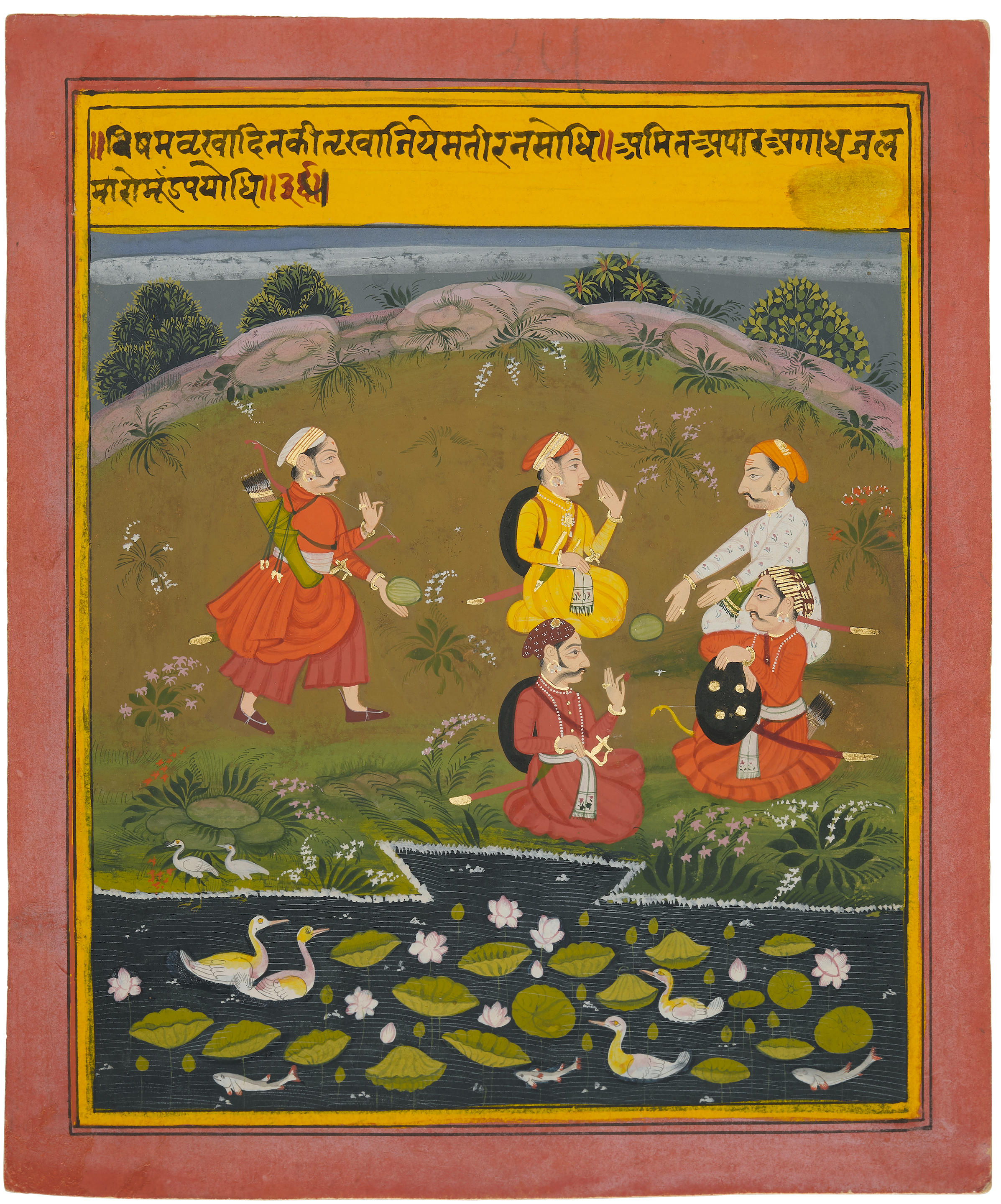
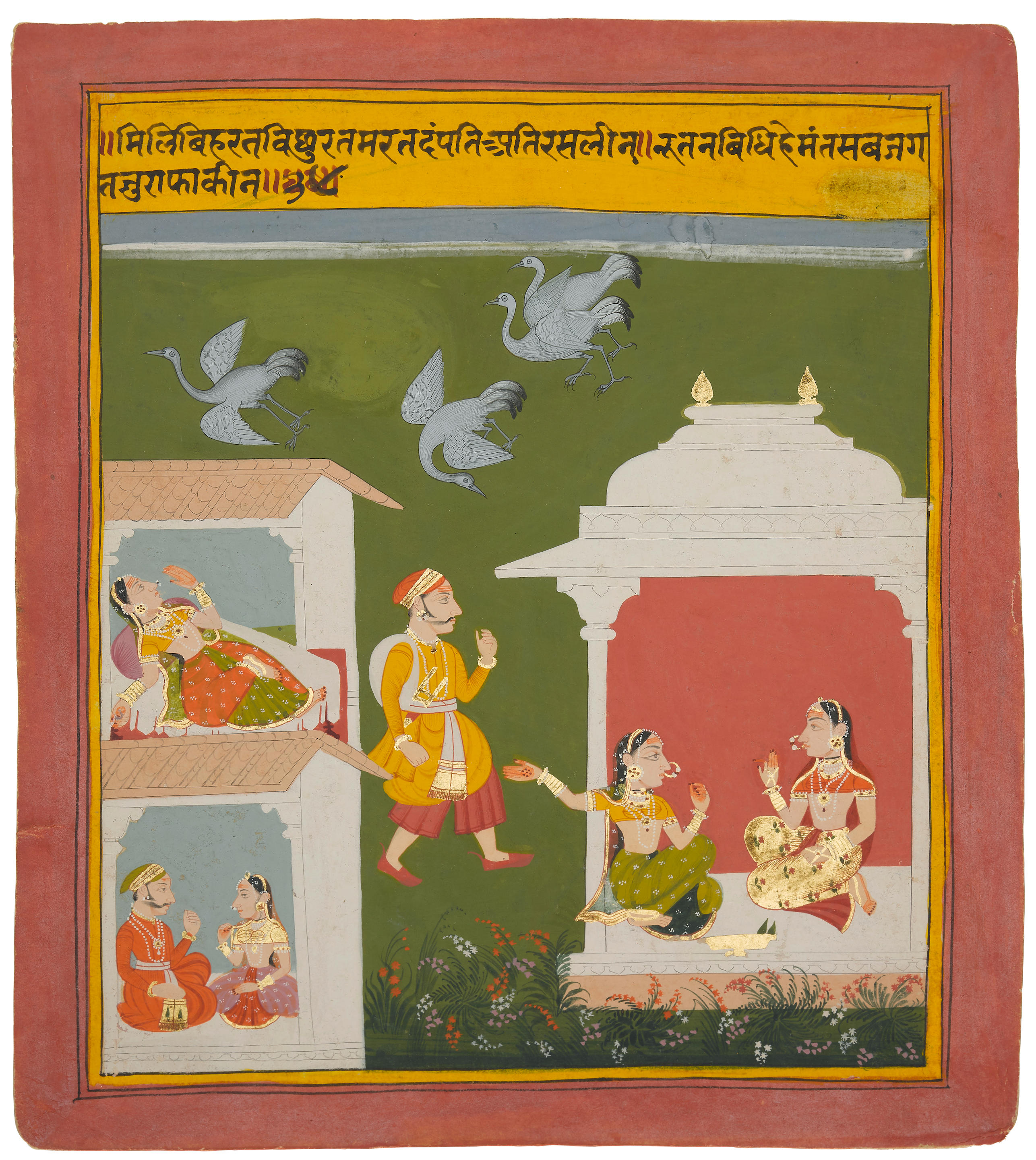
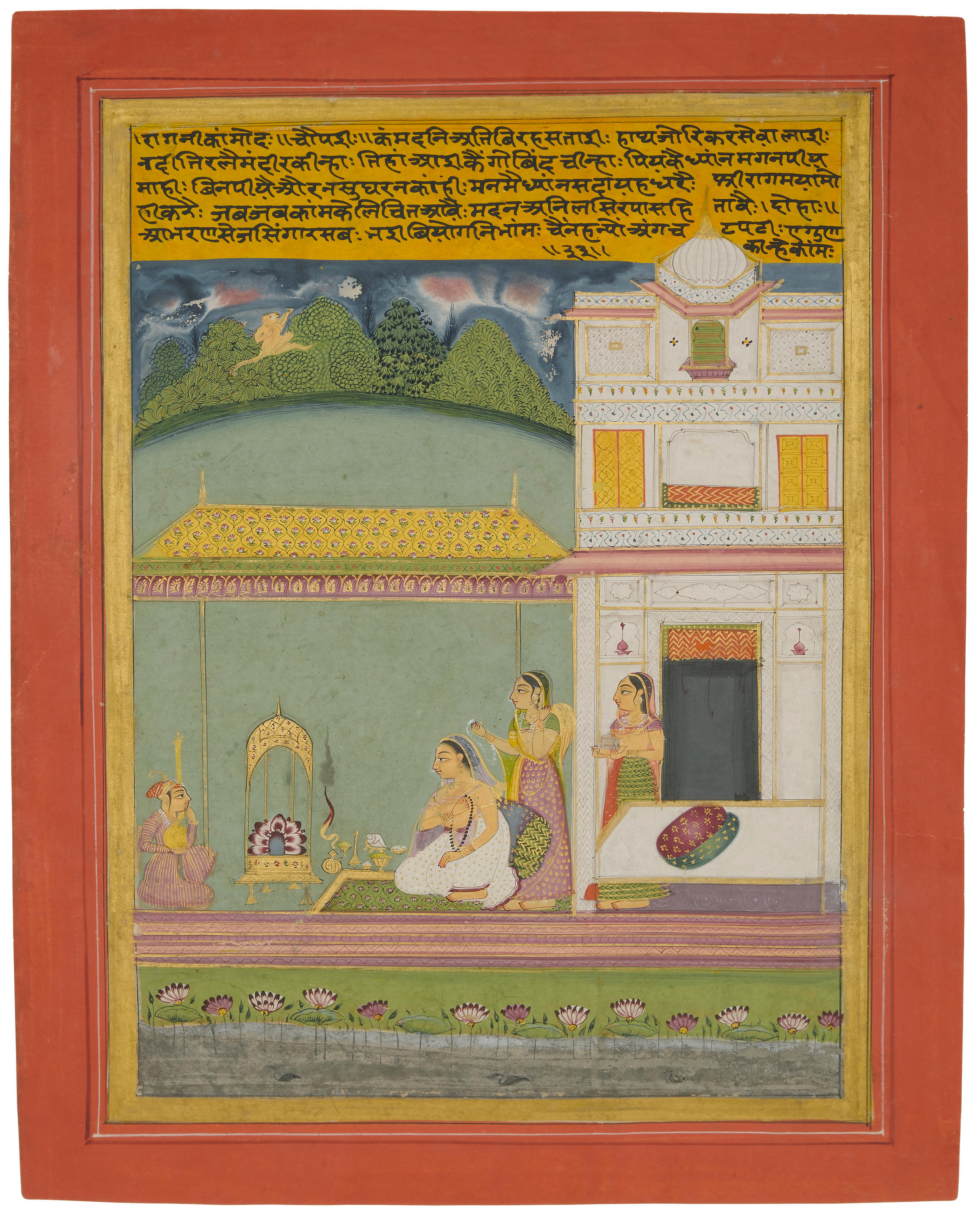
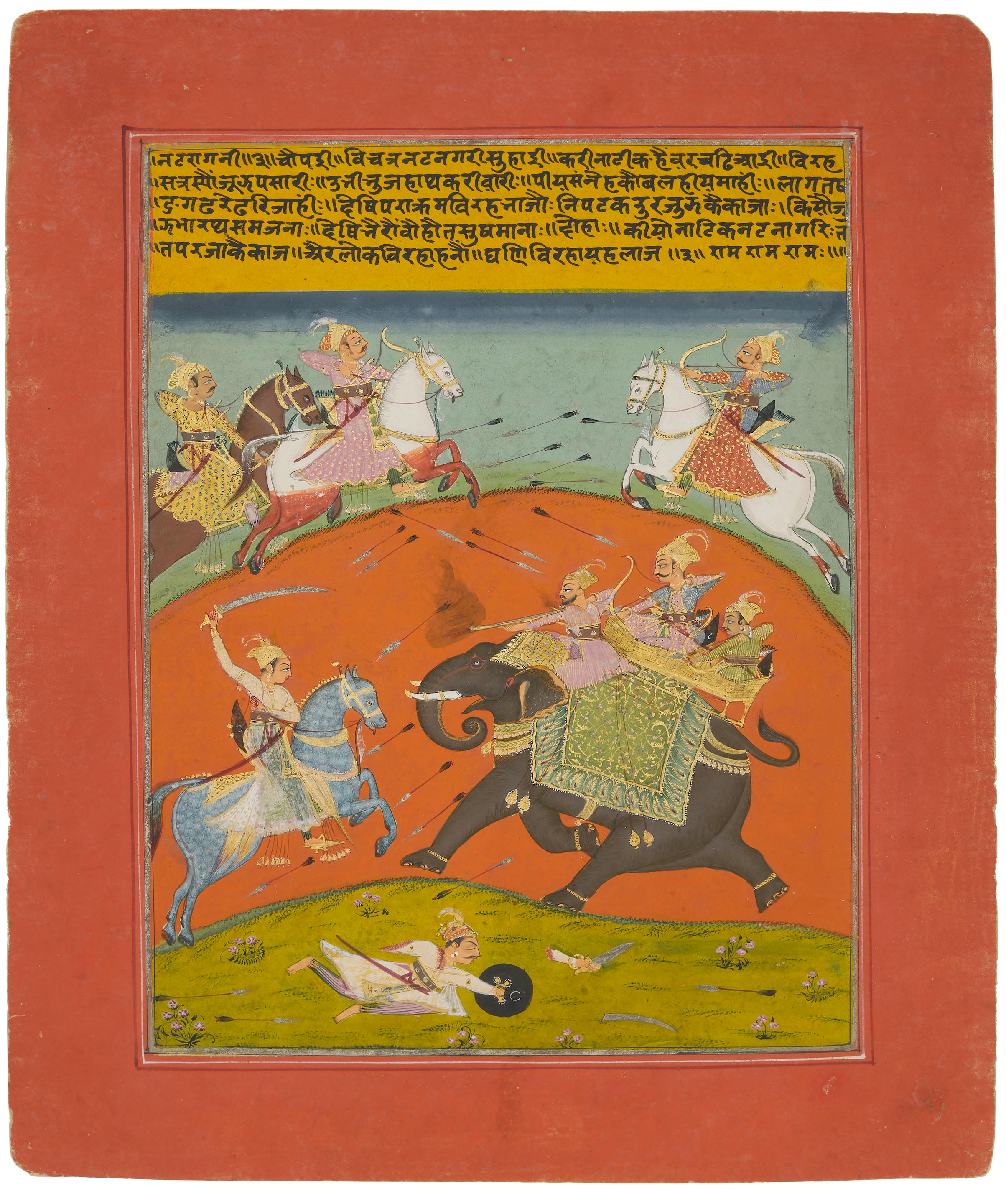
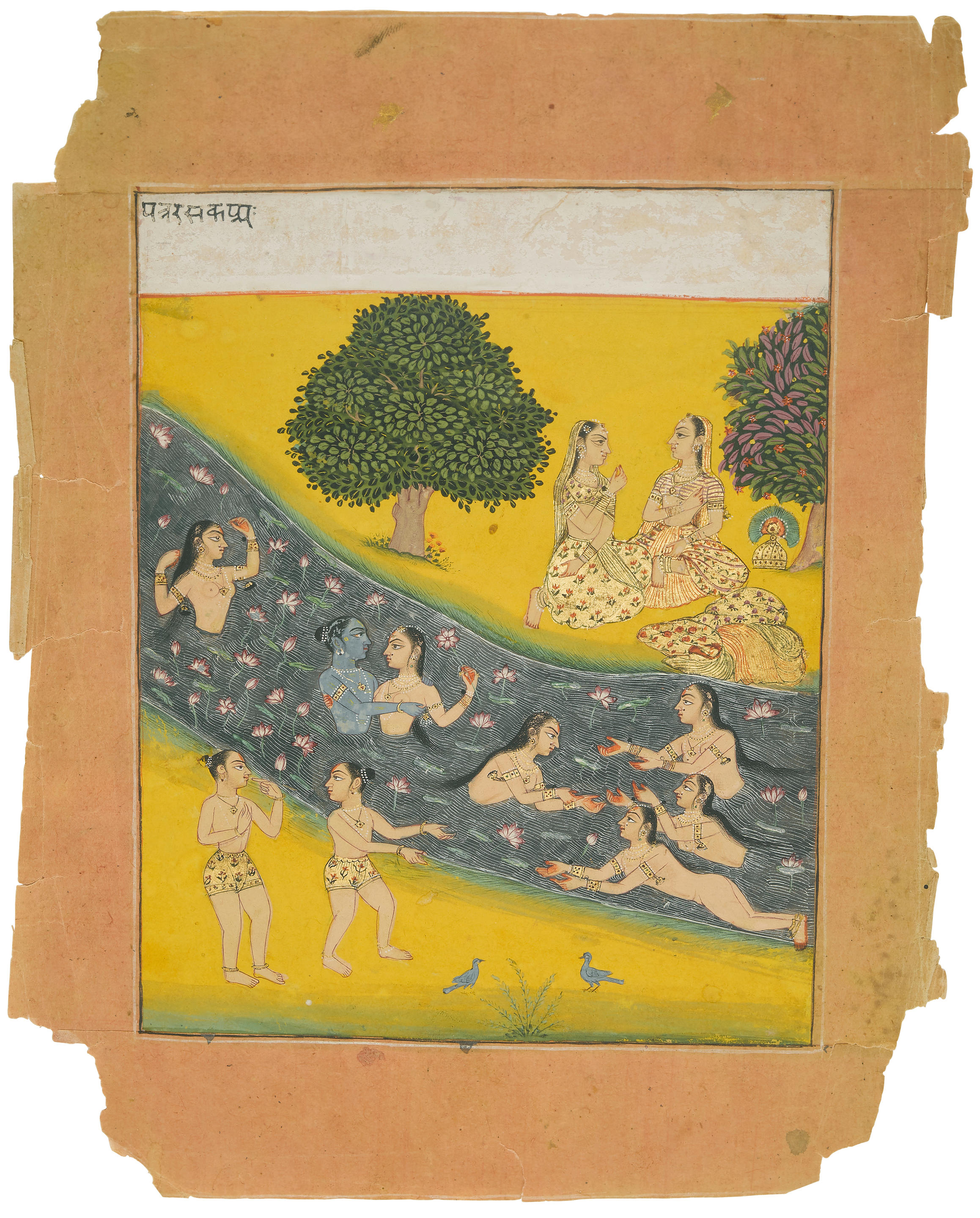
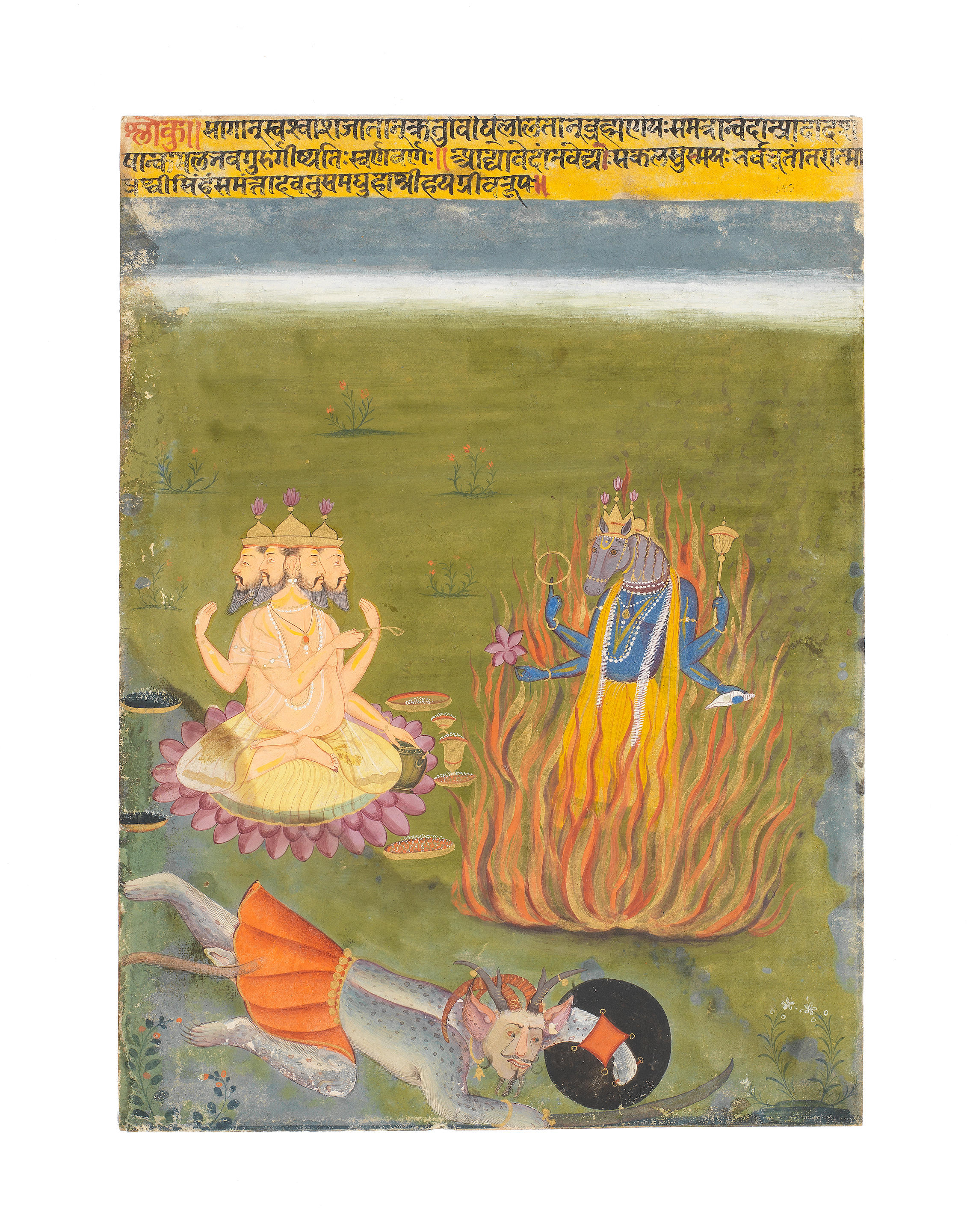
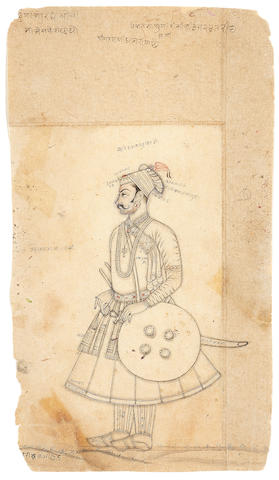
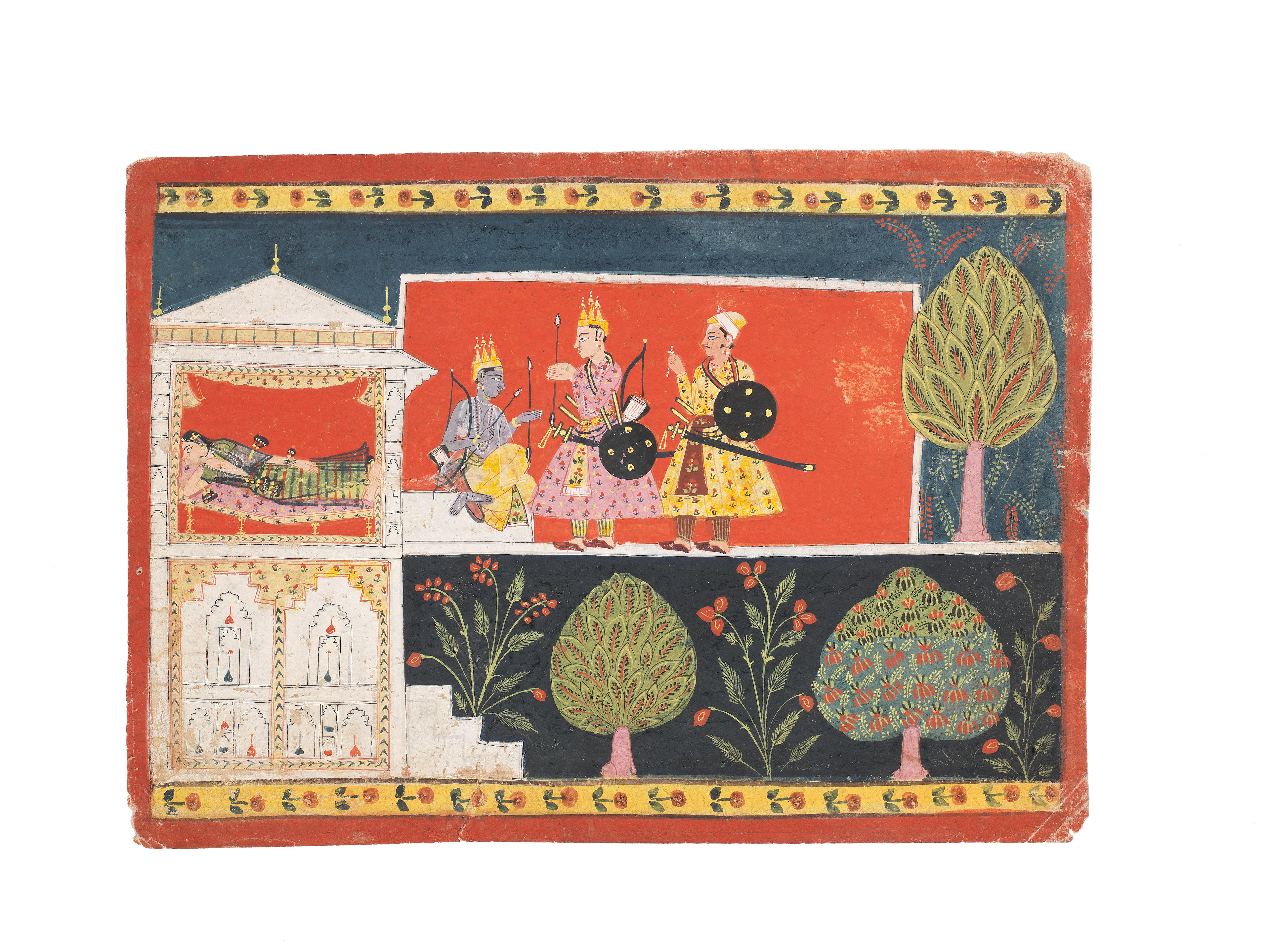



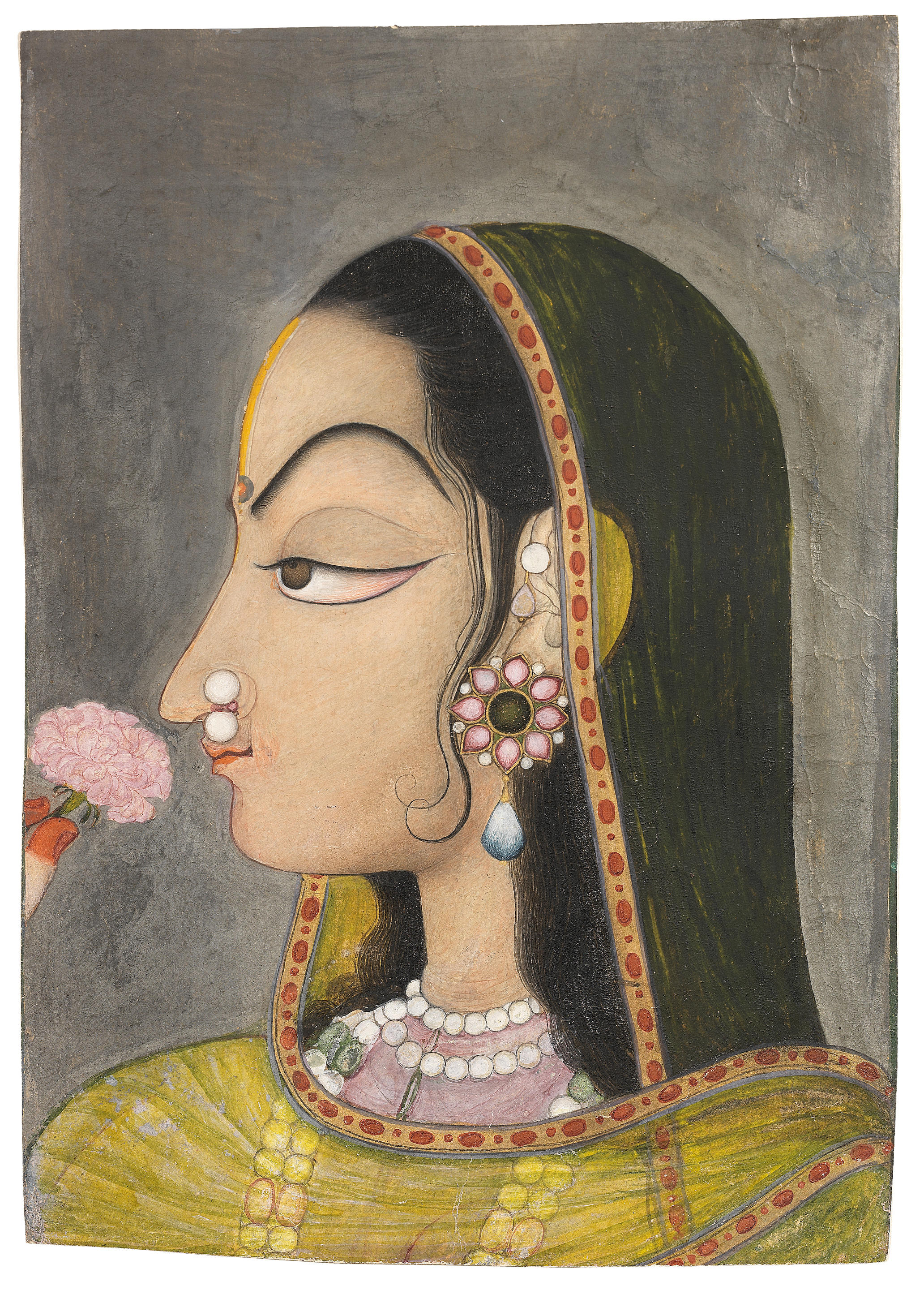
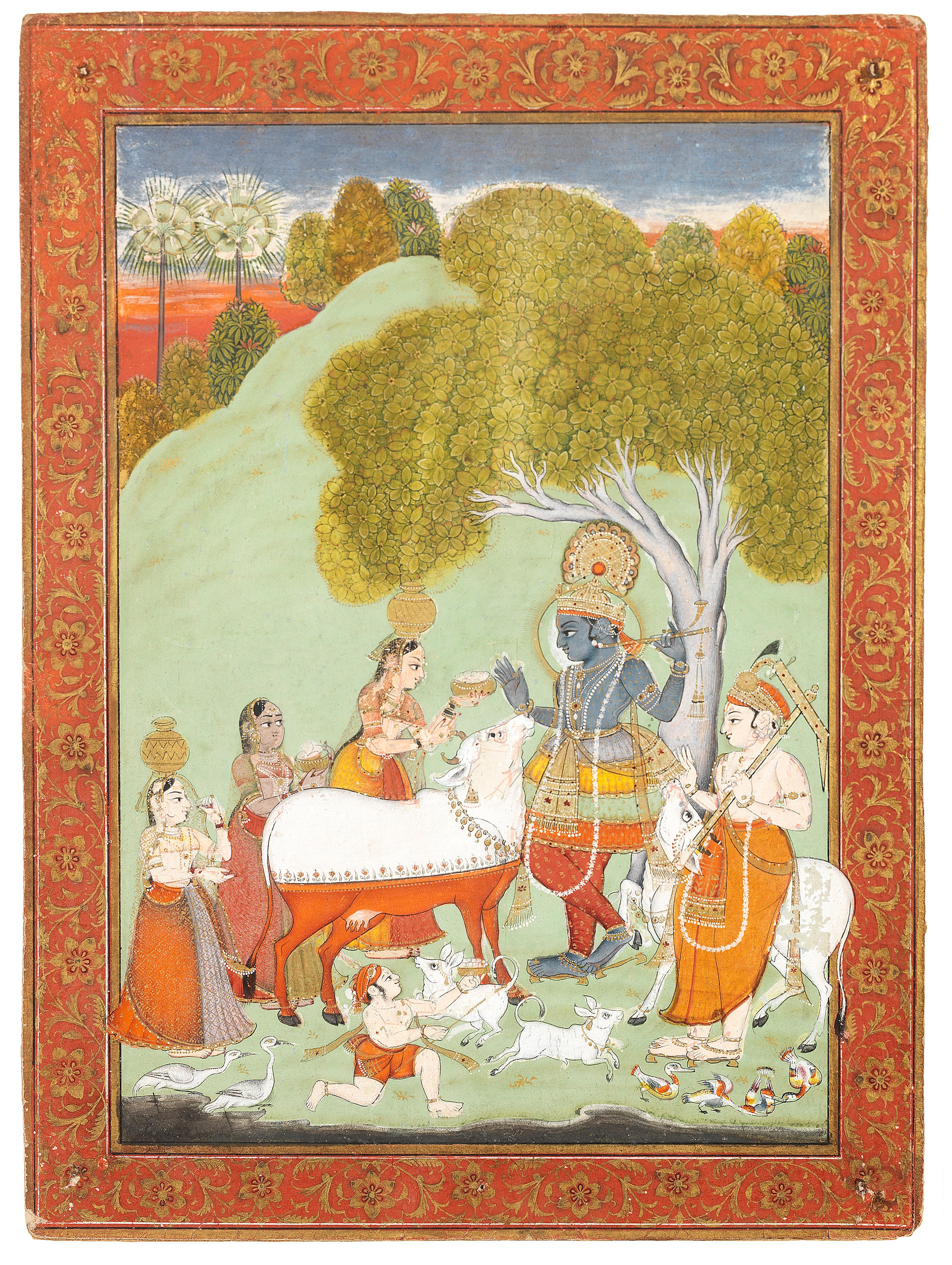

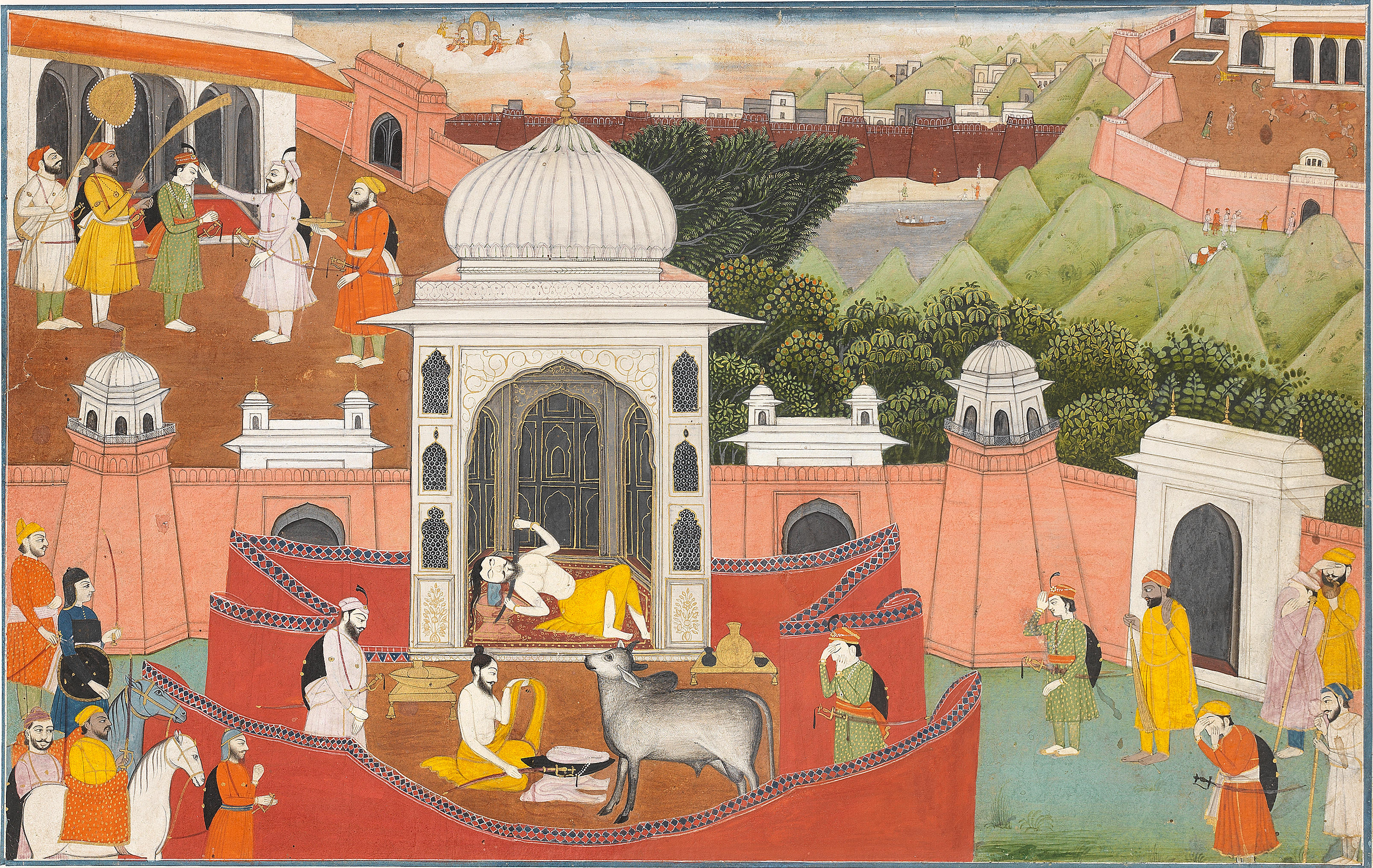
Try LotSearch and its premium features for 7 days - without any costs!
Be notified automatically about new items in upcoming auctions.
Create an alert